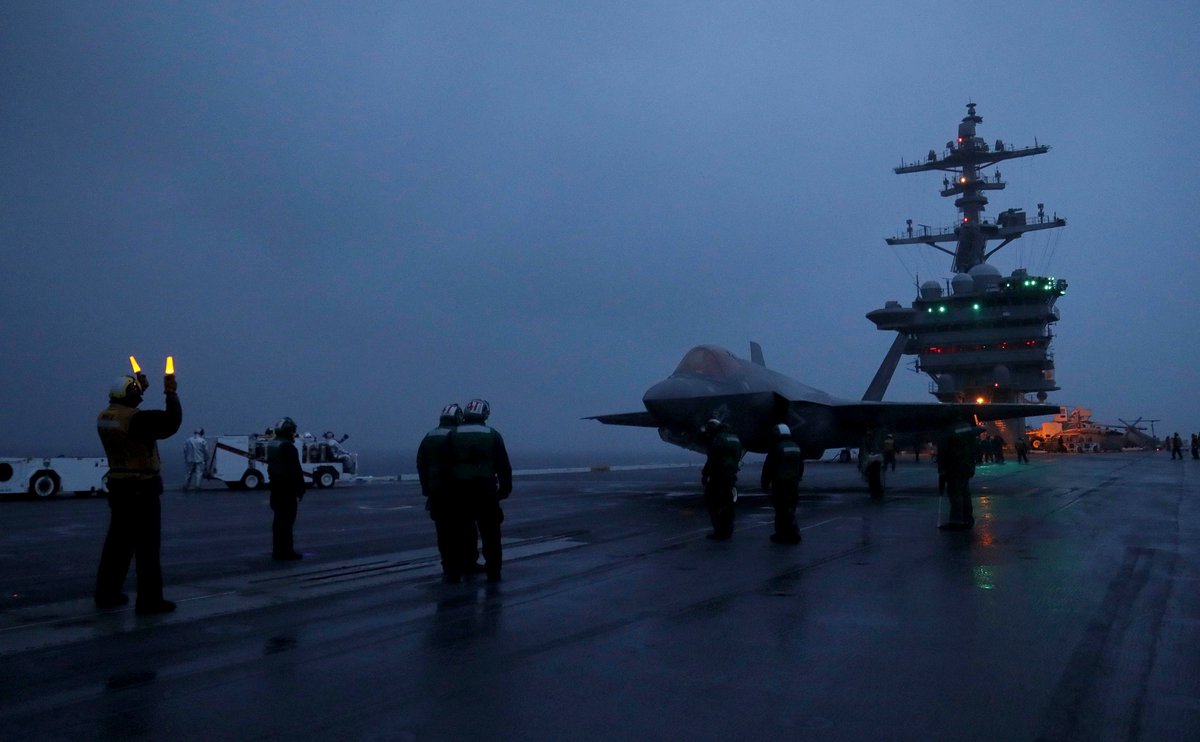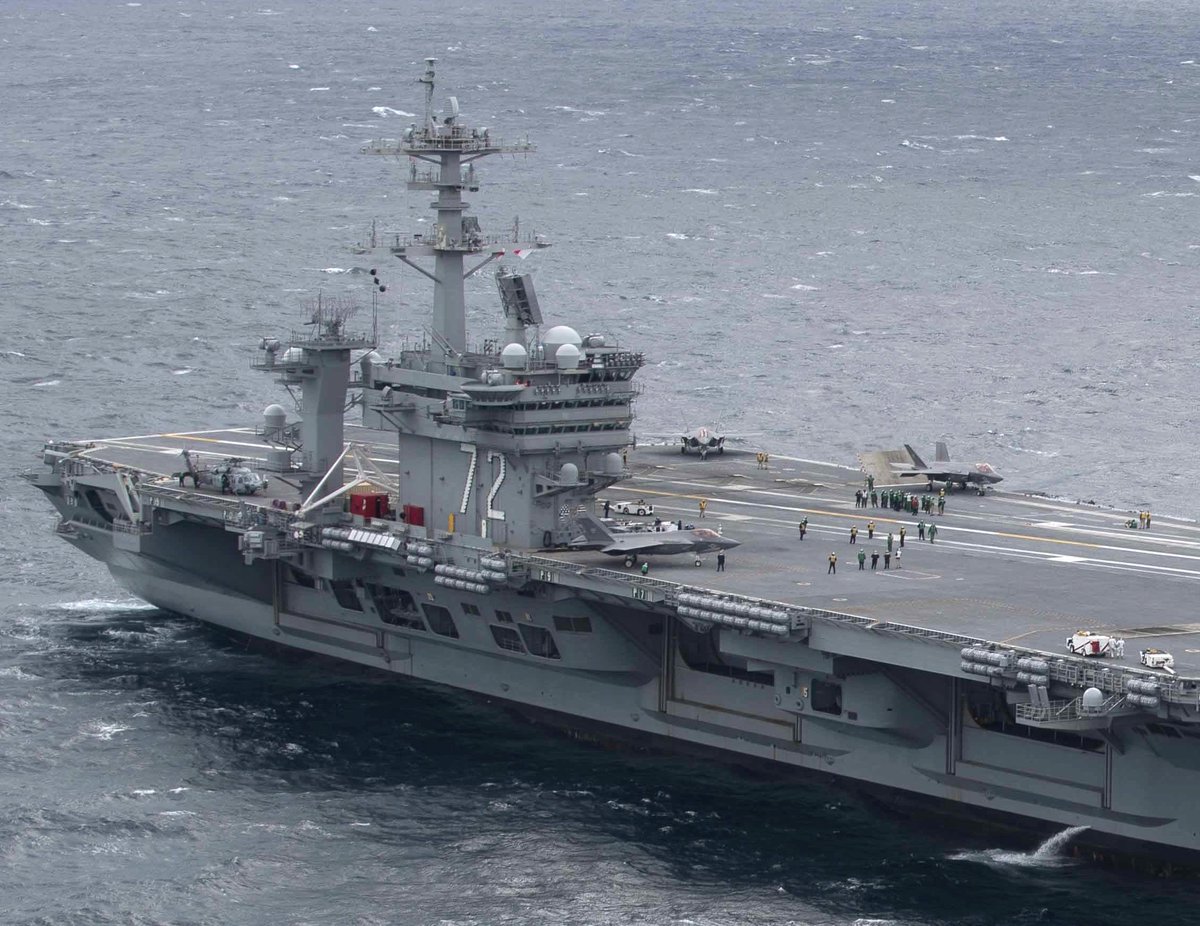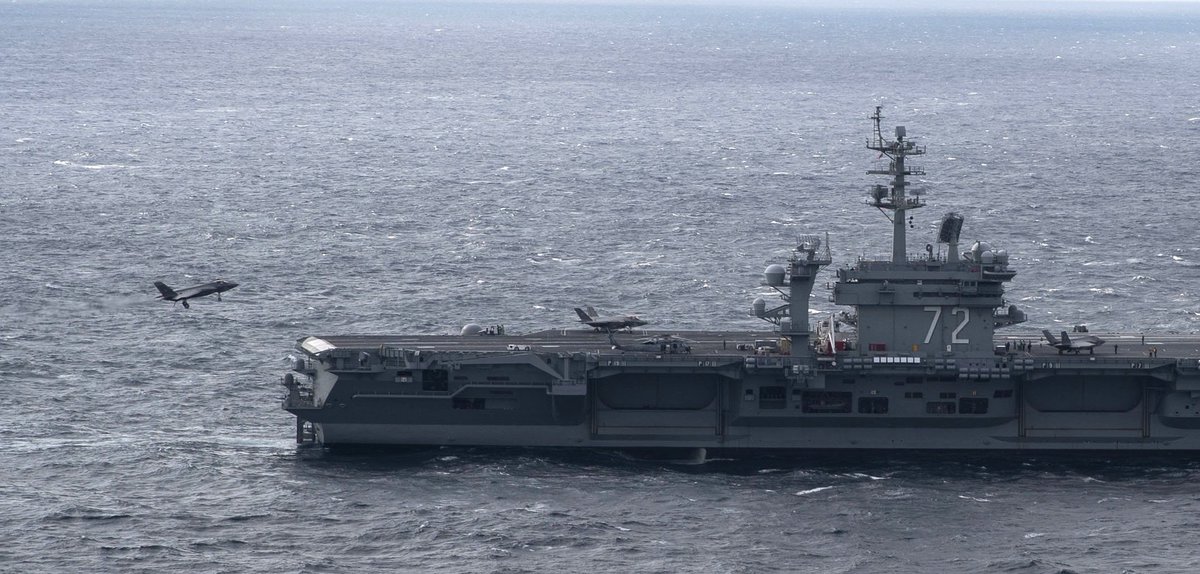You are using an out of date browser. It may not display this or other websites correctly.
You should upgrade or use an alternative browser.
You should upgrade or use an alternative browser.
Aircraft Carriers III
- Thread starter Jeff Head
- Start date
Jura The idiot
General
according to a fanboish source ‘The Queen Elizabeth class can fly 72 fast jet sorties per day’ – Aircraft Carrier Alliance Chief Engineer discusses the vessels
December 13, 2017
December 13, 2017
Aircraft Carrier Alliance Chief Engineer, Martin Douglass, discussed HMS Queen Elizabeth and HMS Prince of Wales.
“From HMS Queen Elizabeth going to sea and entering her homeport of Portsmouth for the first time, to HMS Prince of Wales being officially named by the Duchess of Cornwall. This week, not only have we celebrated the commissioning of HMS Queen Elizabeth into Her Majesty’s fleet, but I was so proud that the ship was formally accepted by our customer.
The Aircraft Carrier Alliance has brought together the very best of British industry. I’m immensely proud to be part of the team that has provided our customer, the Royal Navy, and the Nation with the most powerful surface warship ever built in the UK.
The UK has pioneered the design of aircraft carriers, from the first flat top warship in 1918 to the first ‘island’ control tower, ski-jumps and optical landing system. Almost 100 years later, the Aircraft Carrier Alliance is again pushing the boundaries of technology with the Queen Elizabeth Class carriers – 21st century ships for a 21st century navy.
The Queen Elizabeth Class can fly 72 fast jet sorties per day – which can be increased if needed – and will give the UK a world class carrier strike capability for many years to come. She also has increased survivability because of the separation and distribution of power generation machinery throughout each ship.
The ship’s Artisan radar can track up to 800 potential targets at the same time and cut through radio ‘clutter’ generated by the equivalent of 10,000 mobile phones. The long range radar can track up to 1,000 contacts across a 250 mile radius both in the air or at sea. It’s an application of technology that’s already been proven on the Type 45s, but this time is linked to the Carrier’s organic capability to control a wide area of air and sea.”
The Queen Elizabeth class mark a change from expressing carrier power in terms of number of aircraft carried, to the number of sortie’s that can be generated from the deck. The class is estimated to be able to sustain a maximum sortie generation rate in surge conditions of up to 110 sorties per day according to an engineer we spoke to when on-board HMS Queen Elizabeth, but this was just an estimate after all.
according to a fanboish source
If he's a fanboy then you should take a long time off posting anything about naval matters on the Internet.Aircraft Carrier Alliance Chief Engineer, Martin Douglass, discussed HMS Queen Elizabeth and HMS Prince of Wales.
Jura The idiot
General
If he's a fanboy then you should take a long time off posting anything about naval matters on the Internet.

Jura The idiot
General
related to
F-35 Joint Strike Fighter News, Videos and pics Thread Yesterday at 8:29 AM
F-35 Joint Strike Fighter News, Videos and pics Thread Yesterday at 8:29 AM
is USS Abraham Lincoln completes first F-35C qualificationsnow noticed in Twitter
F-35C Joint Strike of VFA-125 carrying out flight ops off ABRAHAM CVN72 this week off the Virginia coast




source is NavalTodayUS Navy’s Nimitz-class aircraft carrier USS Abraham Lincoln (CVN 72) has qualified the first nine F-35C Lightning II pilots during its underway period.
The Fleet Replacement Squadron (FRS) Carrier Qualifications were successfully completed between December 7 and 11.
Along with Abraham Lincoln, the “Rough Raiders” of Strike Fighter Squadron (VFA) 125, the “Grim Reapers” of VFA-101, and VX-9 accomplished many first steps including first-time use of Autonomic Logistic Information System (ALIS) aboard a carrier, and use of the Joint Precision Approach and Landing System (JPALS) in an operational setting.
“Thanks to the tireless work from the VFA-125, VFA-101, VX-9, CVN72, and the Lockheed Team this detachment was able to successfully complete numerous milestones that will set the foundation for the future 5th generation employment of the F-35C into the Carrier Air Wing,” said Cmdr. Scott Hulett, VFA-125 executive officer.
One of those milestones achieved was with ALIS, an information infrastructure that allows operators to plan, maintain, and sustain systems over the F-35Cs. The system provides a secure way to transmit up-to-date operations, maintenance, prognostic, support, training and technical data to users and technicians worldwide. According to Lockheed Martin, the developer of the F-35C, ALIS is considered the IT backbone of current and future aircraft throughout the Department of Defense.
Abraham Lincoln operated in inclement weather during portion of the qualification process, which gave the squadrons varying condition to test the new landing system, JPALS. The all-weather system works with the ship’s navigation system to provide accurate and reliable guidance for the aircraft. Prior to this underway, F-35Cs only used JPALS for developmental testing.
While the pilots put new systems to the test in the air, Abraham Lincoln Sailors, both on and below deck achieved important milestones. The aircraft intermediate maintenance department performed their first unassisted F-35C tire change. This accomplishment provided proven capabilities that will help ensure full and successful integration of the air wing with Abraham Lincoln.
“We could not have achieved our lofty goals without the dedication and expertise from everyone involved. We look forward to working with the CVN72 team throughout 2018 as we continue to ensure 5th generation power projection from the sea,” said Hulett.
By 2025, the Navy’s aircraft carrier air wings are forecasted to consist of F-35C, F/A-18E/F Super Hornets, EA-18G Growlers electronic attach aircraft, E-2D Hawkeye battle management and control aircraft, MH-60R/S helicopters and carrier onboard delivery logistics aircraft.
Abraham Lincoln is currently underway conducting carrier qualifications and training.
Harpia's next book is due out:

The modern aircraft carrier is without doubt one of the most exciting and hazardous operating environments in the field of warfare. The ‘flattop’ is a symbol of global military power without parallel, and it remains a capability beyond reach of all but the most well equipped navies. With the detail, precision and accuracy expected of Harpia Publishing, this latest volume provides a force report of the various air components and associated vessels fielded by those select nations that field fixed-wing-capable aircraft carriers.
While the United States maintains a carrier fleet the size of which is almost incomparable to that of its rivals, the coverage of this book also extends to the smaller nations that only possess a single carrier: Brazil, France, Russia and Spain. Meanwhile, full coverage is given over to the navies that are in the process of expanding their burgeoning carrier aviation capabilities, through the introduction of new, indigenously designed carriers and aircraft, namely the Asia-Pacific rivals China and India. Within Europe, chapters are devoted to Italy, currently with two carriers in commission, and the United Kingdom, which will make a historic return to carrier aviation this year. Since the scope of this volume extends to navies operating any carrier that routinely embarks fixed-wing air power, US Navy amphibious assault ships and US Marine Corps aviation assets are also included.
Drawing upon a cadre of authors who are experts in their field, Carrier Aviation in the 21st Century continues Harpia’s reputation for providing unprecedented detail and extensive technical specifications, as well as detailing the structure of all the air arms and the individual units that currently embark on board carriers. Illustrations include specially commissioned artworks and diagrams to help illustrate how carrier air power remains an essential element of modern warfare.

Nice and good stuff ! i like the style also look like your
Nice and good stuff ! i like the style also look like your
Thanks... it is Harpia's style and I did the China chapter.





